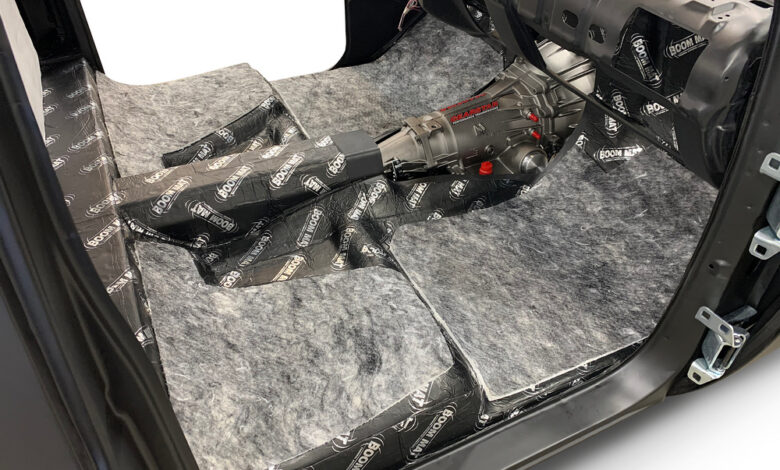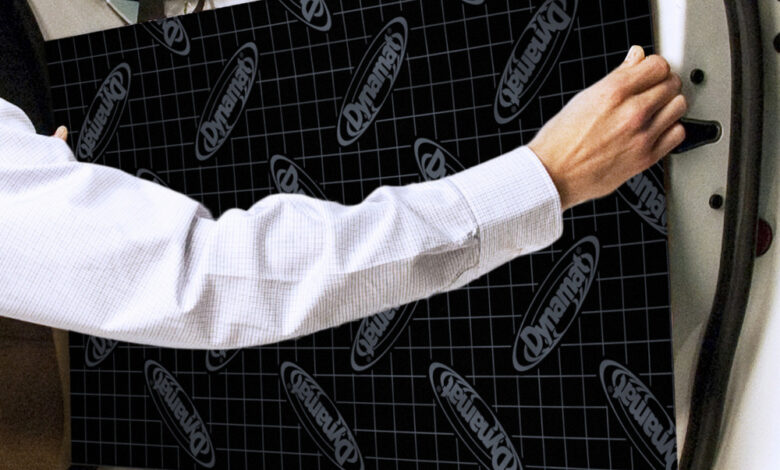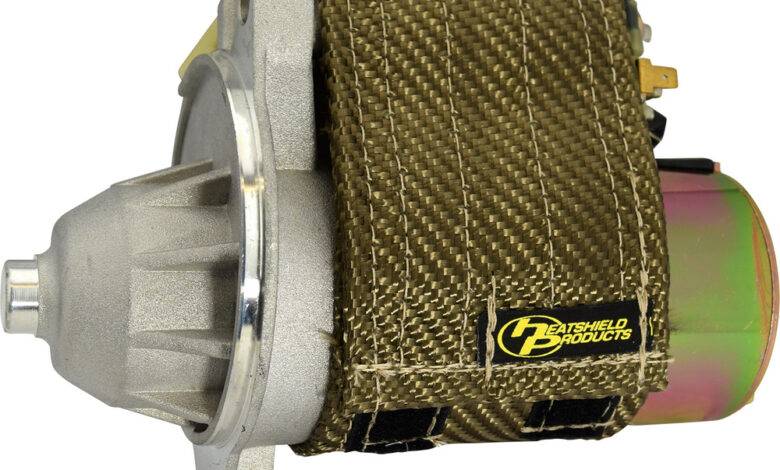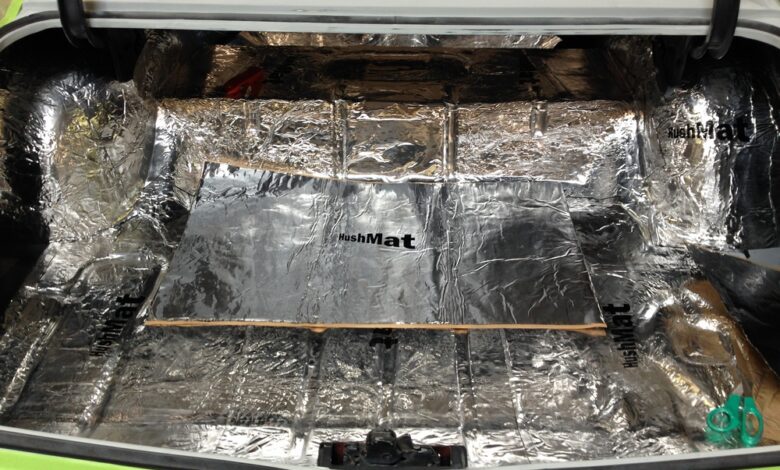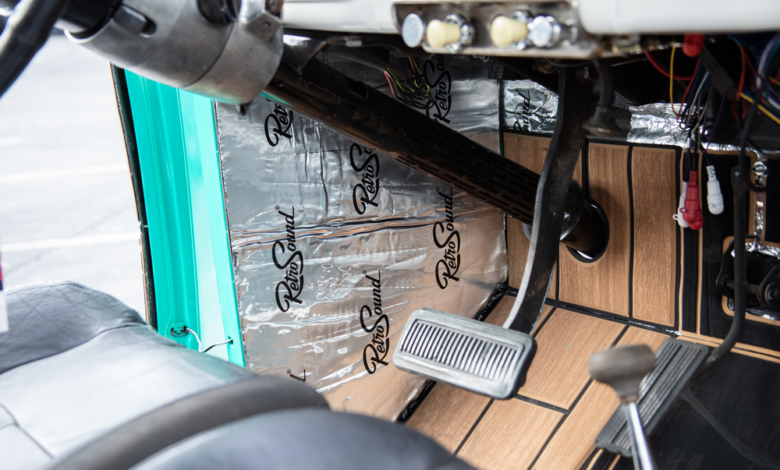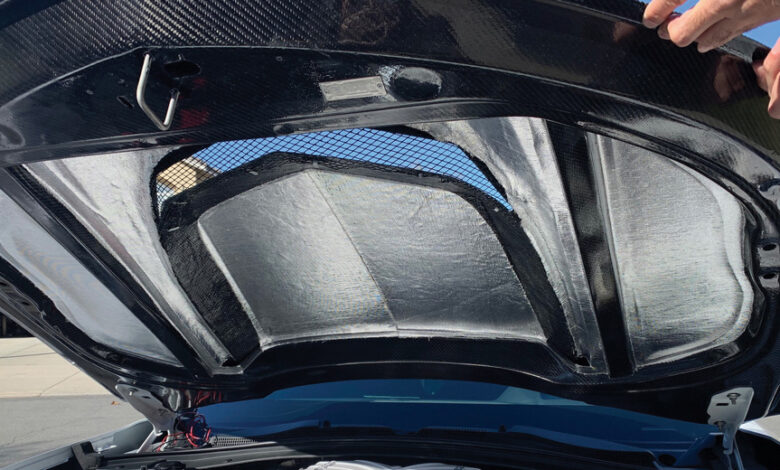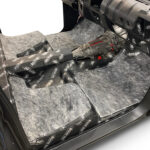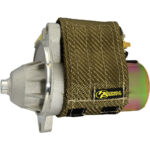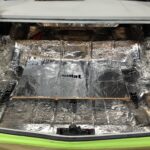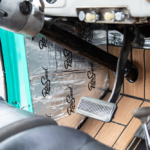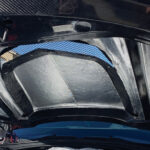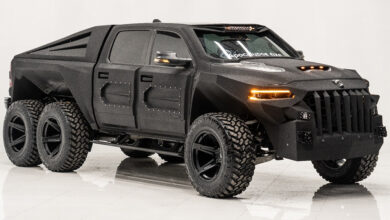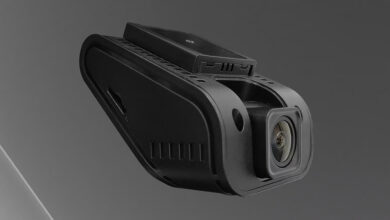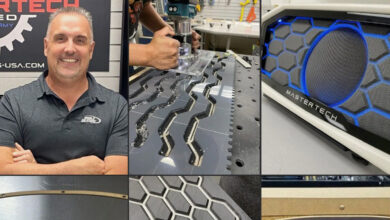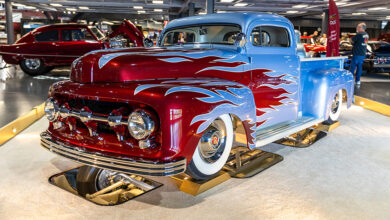This article originally appeared in the May 2023 issue of THE SHOP magazine.
For many drivers, there’s no place better than behind the wheel of their favorite vehicle.
Is it possible for custom shops to further enhance that experience? Heat and sound control products deliver a safer, more comfortable cruise.
Separately or combined, thermal and acoustic suppression materials make a real difference in classics, customs and daily drivers. Unwanted heat and annoying rattles are diminished, whether in the cabin or under the hood. Stereos sound better. Road noise and distractions are reduced.
Shops that offer these products enjoy straightforward installations, application-specific solutions and the complementary sales they generate. Heat and sound control suppliers explain just how easy it is to help drivers find their happy place.
TARGETED APPLICATIONS
If your customers are unsure about adding heat and sound control to their projects, it may help them to know that the OEMs are incorporating these products into the latest vehicle designs.
“Modern automobiles have better insulation to reduce heat and noise inside the cabin. This insulation can be made from a variety of materials, including foam, fiberglass and composite materials,” says Randy Pugh, marketing coordinator for Thermo-Tec Automotive. “Automakers are using more advanced sound deadening materials such as acoustic foam and noise-canceling technology to reduce road noise and other sounds from outside the vehicle.”
The results?
“Overall, these changes have led to quieter, more comfortable and more energy-efficient vehicles that better meet the needs of modern drivers,” he says.
Michael Good, CEO of Dynamat Inc., notes that innovation is front and center.
“Moreso than in previous decades, manufacturers are taking sound and heat control seriously and building better vehicles that take these into consideration,” he notes.
It seems to be what everybody wants these days.
“Drivers have become accustomed to modern vehicles, which are very quiet and have heat management under better control than ever before,” says Cole Quinnell, marketing director at Heatshield Products. “Customers want that same level of quality in their older vehicles, and we are able to deliver that using modern advanced technology.”
While there was a time when the aftermarket took a one-size-fits-all approach to creating a comfortable vehicle interior, now there are specialized products for specific applications.
“In the past, you would use one material to try and control heat and sound,” says Mike Buca, product manager for Design Engineering Inc. (DEI). “We have materials that are designed for specific areas of the vehicle, providing the best performance for the application.”
Quality products appeal to the customers you see every day, says Tim McCarthy, founder/CEO of HushMat.
“We developed constrained layer damping material (rubber extrusion with metal laminate) for the North American automotive industry in the late 1980s,” he says. “Heat is the enemy of speed, while noise is the enemy of driver comfort—HushMat treats them both.”
And as customer demographics change, the industry is keeping pace.
“Within the restoration segment we continue to see a larger increase in the 25-34 age group when compared to older demographics. As a result, vehicles from the 1970s and ’80s are becoming more popular to restore than earlier models,” observes Kenley Harrington, director of sales and marketing for Retro Manufacturing. “Changing our definition of a classic car and developing products for those vehicles are necessary to align with this evolving customer base.”
EXPERIENCE COUNTS
When it comes to common mistakes he’s seen installers make, Buca references selecting the wrong material for the application and/or not using the correct amount. He also cautions against choosing lesser-quality products.
“Trying to save when it comes to the comfort of the customer is really doing your customer a disservice,” he states.
If price becomes a deciding factor, he notes that damping material does not have to be installed over 100% of the interior to get the job done.
“Using a high-quality damping product in lesser amounts, but in the correct locations, will perform just as well, but costs less and saves weight,” he reveals. “You can then use the proper material to control heat. In the end, you will end up with a better result and a happy customer.”
Of course, you can take the minimalistic approach too far, Quinnell warns.
“Whether it is an exhaust system being wrapped or protected components such as fuel lines, brake lines or the underside of the floor, people sometimes try to apply the minimum amount required, leaving too much exposed and not getting the full effectiveness from the heat insulation.”
There are real differences in available products that shops should recognize, McCarthy explains.
“The assumption that all sound deadening and thermal insulation materials are the same is simply not true,” he says. “Several brands have entered the market with products sourced overseas. These materials are not specified and approved for the rigors of North American automotive industry standards. Test data against relevant automotive specifications should be the starting point of product evaluation.”
Lack of adhesion, melting and overall poor performance are hallmarks of these low-quality products, according to Good.
“We are now truly witnessing a ‘you get what you pay for’ marketplace,” he says.
This type of knowledge is vital for shops wanting to make the most out of the product category, Pugh says.
“Oftentimes, shops will recommend a specific product or service without fully understanding the unique requirements and preferences of their clients,” he says. “For example, a shop may recommend a heat control product that is not suitable for the specific vehicle or application, or may install a sound control product that does not adequately meet the customer’s expectations. This can result in dissatisfaction with the product or service, as well as wasted time and money.”
Another common mistake is not properly training staff on the proper installation techniques for the specific products being sold, he adds, which can lead to improper installation and/or the product not working as intended.
“To avoid these mistakes, shops should take the time to properly assess the needs of their customers, provide personalized recommendations and ensure their staff is well-trained on the products and installation techniques,” Pugh suggests. “This will result in happier customers and a better reputation for the shop.”
When it all comes together, customers notice.
“Shops that provide a high level of tech support on the products they install tend to sell more,” says Harrington. “Customers expect support from the start of their buying journey and continue to need support even after products are installed in their vehicles. Providing quick solutions and answering simple questions builds trust and leads to returning customers and product retention.”
DEMONSTRATION MOTIVATION
Want to increase your sales of heat and sound control products? Buca from DEI says show, don’t just tell.
“Have display products on hand for the customer to see and feel,” he says. “Take a small piece of sheet metal and install some sample products, so the customer can really understand the difference this product can make. Planning heat and sound control in any build will benefit the shop and the customer.”
Quinnell from Heatshield Products agrees with the show-me approach.
“Demonstrations and testimonials. We have immense success at trade shows using a propane torch to apply heat to one side of a heat shield and using a heat gun to measure the temperature on the other side. The difference is amazing and easy for a customer to understand.”
After all, if drivers don’t know about the products or their benefits, they aren’t likely to understand their value.
“Shops need to merchandize to allow customers to experience the brands. Too many shops and installers wait for the customer to ask for products, which happens very infrequently,” says McCarthy, noting HushMat offers a library of features and benefits, installation videos and a dedicated dealer portal.
Electronic information is also crucial for potential customers who start their research somewhere other than the showroom.
“Online sales today account for almost 15% of all retail sales in the U.S. Customers are shopping online more than ever for household items and expect the same experience when purchasing auto parts,” says Retro’s Harrington. “Neglecting product listings will have a direct effect on your sales. Ensure all product listings are accurate and updated with the latest dealer resources from your manufacturers and communicate your services clearly. Customers should have a fast and memorable experience on your website.”
When it comes to heat and sound control, it’s all about how the driver feels behind the wheel.
“It’s important to highlight the specific ways in which these products can improve the comfort and performance of a vehicle or building, such as reducing noise, improving temperature control and increasing energy efficiency,” says Thermo-Tec’s Pugh. “Another effective strategy is to offer promotions and discounts on heat and sound control products, particularly during peak sales periods or as part of a bundled package with related products such as audio systems or window tinting.”
And the relationship shouldn’t end at the sale, he adds.
“Provide excellent customer service and follow-up support, such as offering installation services or answering any questions customers may have about the products. This builds trust and confidence, leading to increased sales and customer satisfaction.”
Put it all together, and heat and sound control products become an attractive offering for restylers, 12V specialists and performance outlets.
“A lot of shops don’t realize how much of a revenue-generator these products can be when positioned as complementary products to other modifications such as sound systems or exhaust systems,” says Good from Dynamat. “These products make the car a better car. For shops, they are revenue generators.”
